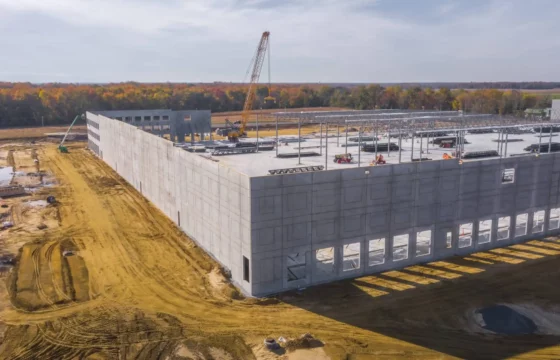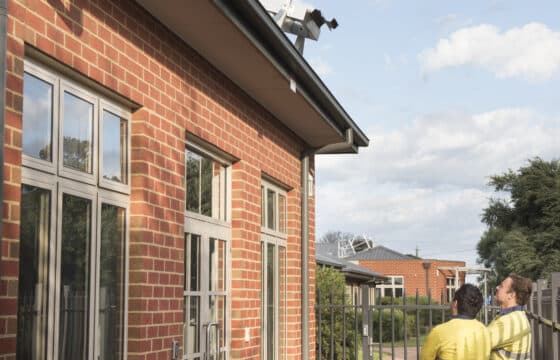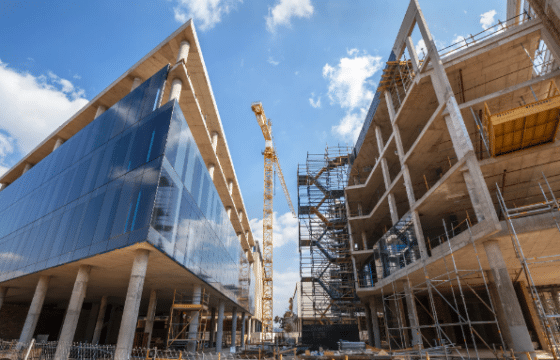Fall Prevention In Australia Needs A Major Overhaul
Fall Prevention In Australia Needs A Major Overhaul
I recently participated in an article written for the SafteyAtWorkBlog. The article covered some of the current issues on fall prevention in Australia.
I’ve received a lot of feedback since the publication of this article, so I added it below and would like to offer the opportunity for readers to leave a comment and generate an open discussion.
Fall Prevention In Australia Needs A Major Overhaul
“If you need to use that, you’ll almost certainly die,” says fall prevention expert Carl Sachs, pointing to a guardrail on the rooftop of a multi-storey Melbourne office block.
Fixed to flimsy aluminium flashing, the guardrail flies in the face of several mandatory and voluntary standards but Sachs says non-compliances are more the norm than the exception on Australia’s rooftops. The problem, he says, is that height safety equipment installers need no training or qualifications and nobody is checking that their work really is capable of saving lives.
“Australians wouldn’t accept unqualified electricians wiring our houses but, as it stands, all you need is a ute, a credit card and a cordless drill to install the safety gear that stops us falling off skyscrapers,” he says.
It’s a concern echoed by, plumbers, building surveyors, facility managers and builders.
Paul Naylor of the Master Plumbers Association of NSW, says plumbers risk deadly falls daily.
“Whilst due diligence principles can be applied and all care taken to ensure that height safety systems are adequate, without some form of regulation or certification, workers are placed at risk of serious injury everyday due to a lack of knowledge and regulation specific to fall prevention,” Mr Naylor says.
Compliance confusion
“The current Code of Practice for Managing the Risk of Falls at Workplaces refers to over nine separate Australian Codes and Australian/New Zealand Standards, as well as gives consideration to individual manufacturer’s requirements,” says Mr Naylor.
“Surely it makes sense to have the installation of engineered structures such as guardrails, anchor points and even access ladders, carried out by a licenced specialist who has in-depth knowledge of the standards required and also experience in the practical application of installation.”
The maze of codes, regulations and standards dealing with fall prevention is all too familiar to Carl Sachs. The managing director of Workplace Access & Safety, Mr Sachs also represents the Master Builder’s Association and Facility Managers Association (FMA) on Australian Standards review committees.
“It’s a very technical field with serious legal ramifications and workplaces rightly rely on specialist contractors to do their jobs properly,” Mr Sachs says.
“In many cases, they don’t, risking the safety of workers exposing everyone else to hefty penalties and jail terms.”
Competence difficult to measure
Prominent OHS lawyer and author Michael Tooma says workplaces have every reason to be concerned. [A video interview with Michael Tooma on this issue is available HERE]
We asked Mr Tooma to advise whether those responsible for a site could rely on roof anchors, guardrails, ladders and so on that were designed by engineers, specified by architects, installed by builders and certified by independent certifiers. The answer was “no”.
“You cannot simply always rely on contractor assurances,” Mr Tooma says, “but the extent of your obligations and the inquiries you need to make will depend on the circumstances.”
The WHS Act requires obligation holders to do what is “reasonably practicable” to ensure safety and health, he says, and how that is defined varies with each case.
On the other hand, Mr Tooma says there is plenty workplaces can do to ensure obligations are met. Chief among them is to, “after undertaking appropriate investigations, select a designer with appropriate skills and competence to undertake the task.”
General manager of WorkCover NSW‘s Work Health and Safety Division, John Watson, says ‘competence’ is key, although self-regulated.
“Installers of these systems would need to be competent,” Mr Watson says.
“This requires installers to have, through training, qualification or experience, the knowledge and skill to carry out the task. The basis of safe installation relates to designer/manufacturer instructions that must be followed when installing these systems. This provision is required as per the Work Health and Safety Regulation at Clause 201 duties of persons conducting businesses or undertakings that install, construct or commission plant.
“So the controller of the workplace can confirm with the installer if they are following manufacturers’ instructions and for them to demonstrate this. This may be in the form of safe operating procedures. It can also be confirmed that those individuals installing the system have received training in these procedures.
“Finally, questions that can be asked directly to the installers is whether they have installed this specific system, where they did this and how long ago.”
Since there is no industry-recognised training or qualification for fall prevention equipment installation, such as a licence, verifying installers’ assurances of competence can be tricky. Builder, Ken Carter of Flexem Constructions, says the complexity of the codes and standards make formal qualifications essential.
“It is essential to understand that no one person is capable of knowing the content and details across all the Australian Standards or BCA requirements for even a basic building. That is why we need licensed experts like electricians, plumbers and A/C techs and why we need to be able to trust them,” Mr Carter says.
Facilities managers are equally troubled, says Facilities Management Association CEO, Nicholas Burt.
“Assessing the competency of fall prevention installers can be a real challenge for the facility manager,” Mr Burt says.
“It is vital that they not only work with companies that demonstrate compliance but they also develop a good understanding of the current standards themselves. Lack of knowledge can be one of the major hurdles to securing the safety of a site and ensuring it is compliant for work at heights.”
Call for mandatory accreditation
To help facility managers deal with safe work at heights compliance, Workplace Access & Safety runs regular seminars and Carl Sachs says attendees are desperate for the reassurance that formal qualifications would bring when engaging contractors.
His own firm has attained a variety of accreditations, including Registered Training Organisation (RTO) status, a specialist builder’s licence, and, most recently, ISO9001 accreditation, while staff members sit on Australian Standards review committees to stay ahead of industry developments. While Mr Sachs agrees all of this is also very marketable, he says it is critical that workplaces demand more information from contractors.
“Ask your contractors for a copy of their accreditations and check the details,” he recommends.
“You need to be sure the accreditation applies to the job you’re doing and that they were independently verified. Any shonky contractor can spend $500, fill in the blanks of an electronic ISO9001 system or generic off the shelf safety plan template, falsify their training records, issue a certificate themselves, sign it and claim compliance.
“Independent accreditation and certification by a reputable organisation like SAI Global and Bureau Veritas, which has been around for 180 years, means your contractor is actually doing what the system says it must be doing, and that the scope of the accreditation relates to the work. It’s not much use having a contractor whose ISO9001 scope is for general construction or fabrication installing equipment on site.”
Checks and balances inadequate
Enforcement of Victorian law seems to be falling through the cracks. Both the Victorian Building Commission and WorkSafe have jurisdiction but neither undertakes inspections – until after a serious injury or death.
A spokesperson for the Victorian Building Commission instead said the building surveyor’s fit for occupancy inspection should pick up non-compliant installations.
Ken Carter said that was unrealistic.
“In some cases where we have built buildings with roof access systems, a certificate has not been part of the private certifier’s requirements for the granting of an occupancy certificate so it isn’t even considered as an essential part of the construction,” Mr Carter says.
“Each certifier has differing requirements but all require the basics – structural, fire, emergency signage, electrical, hydraulic and mechanical.
“In my opinion both a system for roof access safety (even if it is just an anchor point) and a certificate from a licensed installer should be mandatory on all new buildings.”
The Building Commission’s stance is also flatly rejected by Victorian state president of the Australian Institute of Building Surveyors (AIBS), Con Giazi, who says his organisation is lobbying for urgent change.
“To those who say that a building surveyor should be able to pick up all non-compliances, I’d point out that building surveyors are only there on limited occasions and there are provisions for them to rely on certificates issued by qualified or competent installers.”
Given that no qualifications are required and certificates of installation could be issued by anyone, Mr Giazi says building surveyors cannot assess the competency of installers.
“The building surveyor’s not there as a site supervisor,” Mr Giazi says. “At the end of the day, the principal contractor wears the responsibility.”
“When self-regulation fails, it falls on those with deep pockets and, ultimately, the architect, engineer, builder and building surveyor.
“The AIBS is lobbying the Victorian government to have every practitioner – and their subcontractors – on site registered with the building practitioner’s board to add more rigour. While that may create extra work, it does provide credibility and makes each trade more accountable.”
The FMA also calls for a powerful regulator.
“The FMA has a strong advocacy and representative role in the development of standards, and any regulatory agency should be properly resourced to undertake their role in ensuring compliance,” Mr Burt says.
Ken Carter, who deals with fall prevention installers daily, says he “could write an essay on this question,” when asked what would make Australia’s rooftop workplaces safer.
“I think a real shake up in the regulations and standards plus some sort of enforcement – somewhat similar to the introduction of the fire regulations some years ago.”
“Licensing of installers and professionals in the field should be introduced with a short course and test to ensure they know what they are doing. Then we could (as builders) rely on any certificates provided for installations with a degree of trust.”
As those whose lives literally hang in the balance, plumbers are also keen to see increased regulation.
“Having the structures installed, tested and certified by a licenced installer would give peace of mind to our plumbing members by knowing they could confidently work from, or, attach to, engineered structures,” says Paul Naylor.
New push for safer fall prevention installations
Calls for improved installation safety are not new. Australian Rope Access Association founder, Peter Ferguson, says lax regulation has been a “bugbear” of his for many years but dangerous installations are becoming more common.
“There is no oversight and the installation sector is driven by speed, a quick buck and minimal control,” he says. “We have a crisis here.”
“As more and more roof anchors are installed, we will begin to see more and more fatalities in line with the frightening US statistics, where harness-based systems dominate.”
Mr Ferguson says the installation crisis is well-known but industry attempts to deal with it had failed to date.
“WorkSafe and the equipment manufacturers know there’s a problem but we have not been able to improve the competency of people designing and installing fall prevention systems.”
According to the Victorian Building Commission, neither the Building Commission nor the Building Regulations Advisory Committee has considered a specialised category of registration for practitioners who install safety platforms.
“Stakeholders and lobby groups who believe the building legislation should be amended are encouraged to submit a Regulation Amendment Proposal to the Commission,” a Building Commission spokesperson said.
A group is currently being formed to build a proposal for the licensing of fall prevention installers and for mandatory training. Carl Sachs says it is keen to attract more members to ensure all stakeholders are involved. For more information, contact Mr Sachs at Workplace Access & Safety.
Article Originally Published on SafetyAtWorkBlog – 18/04/2013
http://safetyatworkblog.com/2013/04/18/fall-prevention-in-australia-needs-a-major-overhaul/
About The Author

Carl Sachs is the Managing Director of the working at heights specialists Workplace Access & Safety. He is a renowned expert in height safety and consults to major corporations and government on working at height. He represents the FMA (Facility Managers Association) on Australian standard committee AS/NZS1891, and was a committee member that redrafted AS1657. He is Chairman of the Technical Committee of WAHA (Working at Heights Association), and is a director of the Association.


